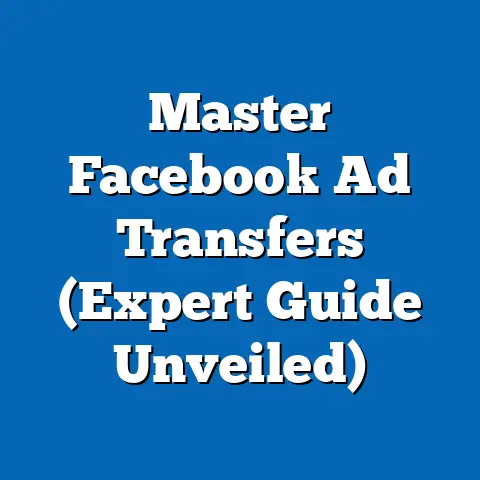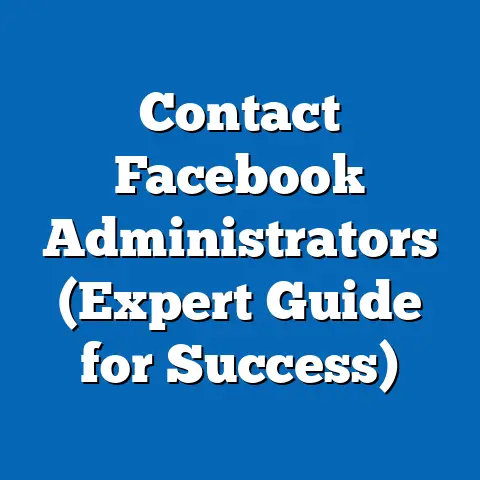Drive Housing Sales with Winning Facebook Ads (Pro Strategies)
Drive Housing Sales with Winning Facebook Ads: Pro Strategies for a Digital Age
Can your real estate business harness the power of digital advertising to skyrocket housing sales in an increasingly competitive market? In today’s fast-paced, technology-driven world, the real estate industry is undergoing a profound transformation, with digital platforms like Facebook emerging as game-changers for marketing and sales. This article delves into the professional strategies that can help real estate agents, developers, and marketers leverage Facebook Ads to drive housing sales, exploring the defining characteristics of effective campaigns, the historical evolution of digital advertising in real estate, and the broader societal implications of this shift.
Facebook, with over 2.9 billion monthly active users as of 2023 (Statista, 2023), offers an unparalleled platform for reaching potential homebuyers across diverse demographics. Its sophisticated targeting tools, cost-effective ad formats, and dynamic visual capabilities make it a cornerstone for modern real estate marketing. However, success on this platform requires more than just posting listings—it demands a deep understanding of audience behavior, data-driven creativity, and strategic optimization.
Section 1: The Rise of Digital Advertising in Real Estate – Historical Context
The real estate industry has always adapted to the communication tools of its time, from newspaper classifieds in the early 20th century to radio and television ads in the mid-1900s. However, the advent of the internet in the late 1990s marked a seismic shift, introducing online listings and websites as primary tools for property marketing. By the early 2000s, platforms like Zillow and Realtor.com became go-to resources for homebuyers, signaling the start of a digital-first approach.
Social media, particularly Facebook, entered the scene in the late 2000s, revolutionizing how real estate professionals connect with audiences. Launched in 2004, Facebook quickly grew into a global hub for social interaction, and by 2007, it introduced its advertising platform, allowing businesses to target users based on demographics, interests, and behaviors. For real estate, this meant unprecedented access to potential buyers—whether first-time homeowners, investors, or retirees—right at their fingertips.
The historical context of this shift cannot be overstated. The 2008 financial crisis, which devastated the housing market, forced real estate professionals to rethink traditional marketing methods like open houses and print ads, which were costly and yielded diminishing returns. Digital platforms offered a lifeline, providing affordable, measurable ways to reach buyers during an economic downturn. Over the next decade, as smartphone usage surged—reaching 81% of Americans by 2019 (Pew Research Center, 2019)—mobile-first platforms like Facebook became essential for capturing on-the-go consumers browsing for homes.
Today, digital advertising accounts for a significant portion of real estate marketing budgets, with social media ad spending in the sector projected to reach $9.2 billion globally by 2025 (eMarketer, 2022). This evolution reflects broader societal trends: a growing reliance on technology, the demand for instant information, and the increasing influence of visual storytelling in decision-making. Understanding this historical backdrop is crucial for appreciating why Facebook Ads have become a linchpin for driving housing sales.
Section 2: Defining Characteristics of Winning Facebook Ads for Housing Sales
What sets a successful Facebook Ad campaign apart in the competitive real estate market? While creativity and budget play roles, the defining characteristics of winning ads boil down to precision, engagement, and adaptability. Let’s break these down.
Precision Targeting: Facebook’s greatest strength lies in its granular targeting options, allowing advertisers to reach specific audiences based on age, location, income level, interests (e.g., “home improvement”), and even life events like “recently engaged” or “new parents.” For housing sales, this means tailoring ads to local markets or niche buyer segments, such as luxury property seekers or first-time buyers. Data from HubSpot (2023) shows that hyper-targeted ads can increase click-through rates (CTR) by up to 200% compared to generic campaigns.
Compelling Visuals and Storytelling: Real estate is inherently visual—buyers want to see homes, not just read about them. High-quality images, virtual tours, and drone footage of properties dominate successful ads, often paired with emotionally resonant copy like “Imagine your family here!” or “Your dream home awaits.” A 2022 study by the National Association of Realtors (NAR) found that 89% of homebuyers cited photos as the most useful feature in online listings, underscoring the importance of visuals in ads.
Call-to-Action (CTA) Optimization: Winning ads don’t just inform—they drive action. Strong CTAs like “Schedule a Tour Today” or “Get Pre-Approved Now” paired with lead generation forms or instant booking tools convert viewers into prospects. Facebook’s own data indicates that ads with clear CTAs see 38% higher conversion rates (Facebook Business, 2021).
Adaptability and Testing: The digital landscape moves fast, and so must advertisers. Successful campaigns rely on A/B testing different ad creatives, audiences, and placements (e.g., News Feed vs. Stories) to identify what resonates. Real-time analytics allow marketers to pivot quickly, ensuring budgets aren’t wasted on underperforming ads.
These characteristics highlight a blend of art and science—creativity fuels engagement, while data drives efficiency. However, they also reflect the diversity of buyer needs, as a one-size-fits-all approach rarely works across varied demographics or property types.
Section 3: Pro Strategies for Driving Housing Sales with Facebook Ads
Building on these characteristics, let’s explore professional strategies that can elevate your Facebook Ad campaigns for housing sales. These tactics are grounded in industry best practices and supported by data-driven insights.
3.1 Leverage Lookalike Audiences for Scalable Reach
Facebook’s Lookalike Audiences feature allows advertisers to target users similar to their existing customers or leads. By uploading a list of past buyers or website visitors, you can create a “lookalike” pool of potential customers with shared traits. This is particularly effective for real estate, where buyer profiles (e.g., young families or retirees) often cluster around specific demographics.
A case study by a mid-sized real estate firm in Texas revealed a 35% increase in lead generation after implementing Lookalike Audiences (Social Media Examiner, 2022). Start with a high-quality seed audience—such as email subscribers or recent clients—and let Facebook’s algorithm expand your reach efficiently.
3.2 Utilize Dynamic Ads for Personalized Listings
Dynamic Ads automatically pull property listings from your catalog or website, displaying relevant homes to users based on their browsing history or interests. For example, if a user searched for “3-bedroom homes in Seattle,” they might see an ad for a matching listing in their feed. This personalization boosts relevance and engagement.
According to Facebook, Dynamic Ads for real estate can achieve up to 4x higher return on ad spend (ROAS) compared to static ads (Facebook Business, 2020). Ensure your property database is up-to-date and tagged with detailed attributes (price, location, features) to maximize this tool’s effectiveness.
3.3 Incorporate Video Content for Immersive Experiences
Video ads, especially 360-degree tours or drone flyovers, create an immersive experience that static images can’t match. They allow buyers to “walk through” a home from their couch, building emotional connections. NAR data shows that 73% of homeowners are more likely to list with agents who use video marketing (NAR, 2022).
Keep videos short (15-30 seconds) for mobile users, add captions for accessibility, and highlight unique property features like renovated kitchens or scenic views. Test carousel formats to showcase multiple properties or angles in a single ad.
3.4 Optimize for Lead Generation with Instant Forms
Facebook’s Lead Ads format streamlines data collection by auto-filling user information into forms, reducing friction for potential buyers. Use these for open house sign-ups, consultation requests, or mortgage pre-approvals. A clear value proposition—such as “Get a Free Market Analysis”—encourages submissions.
Data from WordStream (2023) indicates that Lead Ads can lower cost-per-lead by 20-30% compared to driving traffic to external landing pages. Follow up promptly with leads via CRM integration to maintain momentum.
3.5 Retarget Warm Leads to Close Deals
Not every ad viewer is ready to buy immediately—retargeting keeps your brand top-of-mind for those who’ve engaged with your content (e.g., visited your website or watched a video ad). Use the Facebook Pixel to track user behavior and serve tailored ads, such as price drop alerts or testimonials, to nudge them toward conversion.
Retargeting campaigns boast a 70% higher conversion rate than cold audience ads (AdRoll, 2021). Balance persistence with subtlety to avoid alienating prospects with overly aggressive messaging.
3.6 Localize Ads for Community Connection
Real estate is inherently local, and successful ads reflect this by emphasizing neighborhood perks, school districts, or nearby amenities. Geo-targeting ensures your ads reach users within a specific radius of a property, while localized copy (e.g., “Live Near Downtown Austin!”) builds relevance. Incorporate user-generated content, like reviews from local buyers, to foster trust.
A 2021 study by LocaliQ found that hyper-local ads achieve 50% higher engagement rates in real estate compared to broad campaigns






